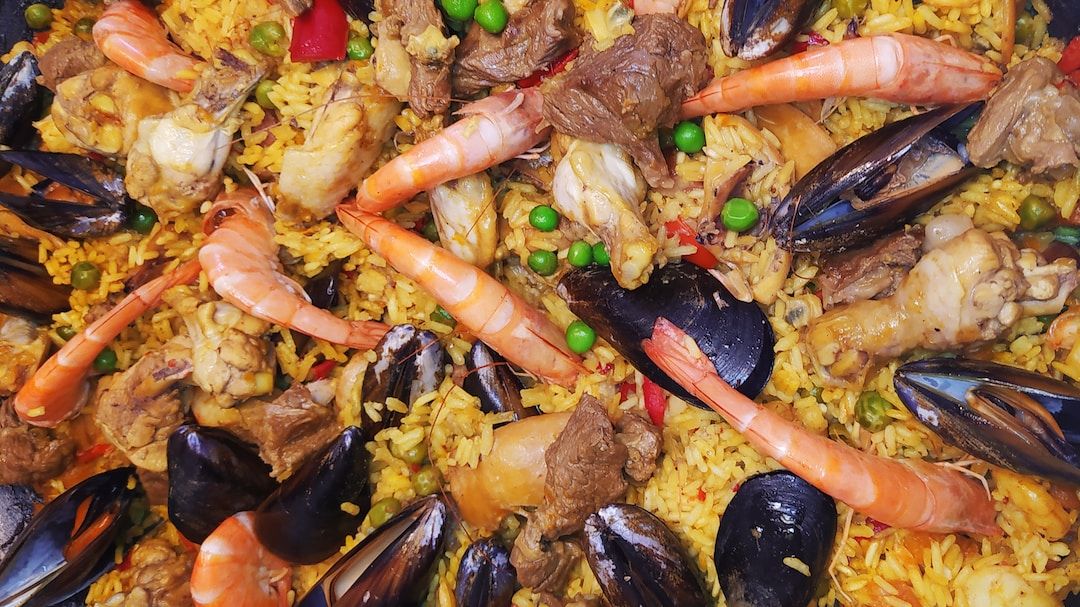¡Hola a todos! This week I wanted to talk to you about something has been puzzling me for a while – the fascinating Arabic influence on the Spanish language and culture. It's
mind-blowing how these two cultures, seemingly worlds apart, have intertwined
and enriched each other over the centuries!
To know a little bit more about why I wanted to deepen my knowledge about it, I need to talk about my past and my roots.
As you all know if you have read my blog before, I was born in Venezuela and my native language is Spanish. However, when I was a little girl growing up, we
celebrated special occasions at my paternal grandparents' house. Those gatherings were a feast of mouthwatering Arab food! Tabbouleh,
Kibbeh, Baba Ghanouj, hummus, falafel, and all the yummy goodness you can imagine and of course, my favorite one, Baklava. I still go crazy for it!
It was the
'70s and '80s, and it was Spanish - speaking - Latin - American Venezuela, but the Lebanese traditions were alive and well in our family. My grandma was a Lebanese descendant, and she made
sure we all embraced the rich Lebanese culture. As a Lebanese descendant, she passed her culture on to her children. My aunts and uncles loved cooking and eating Lebanese food, and the tradition continues with my cousins and I, we absolutely love eating Lebanese food too. I also remember my grandma letting out words in Arabic. All her children and grandchildren were her “Habibi” or “Habibti”. “La” meant “no”, and she would always teach us to say “shukran” or “thank you”. To this day, we still love
indulging in delicious Lebanese dishes – it's a family tradition!
What's even more surprising is that all this time, I had no idea just
how much the Arabic language influenced Spanish. It was only when I started
learning languages that the exciting discovery unfolded!

Let's dive into some history, shall we? The Arabic influence on the Spanish language started way back in the year 711 when Muslim armies from North Africa invaded the Iberian Peninsula, which was ruled by the Visigoths at the time. These Muslims established the Islamic state of Al-Andalus until 1492 and left a remarkable mark on the region, especially in Andalusia. You must visit Andalusia someday, especially the Alhambra of Granada (seen in picture above) – you'll be blown away by the music and architecture influenced by the Arabs.
So, you might be wondering how this Arabic influence shows up in Spanish. Well, it mainly affects the vocabulary, meaning we've got a bunch of Arabic-origin words mixed in with our everyday lingo. The most famous Spanish word, “¡Olé!” which Spaniards use as a celebratory word and at the end of any Spanish song, according to the RAE or the Spanish Royal Academy, comes from the Arab exclamation “Wa-(a)llah” that means “Por Dios” (By God!).

- Aceituna
(Olive): This word comes from the Arabic "al-zaytun," which means
olive. Thanks to the Moors, we got to enjoy delicious olives in Spain!
- Ajedrez (Chess): The Spanish word for chess,
ajedrez, comes from the Arabic "al-shatranj," which means "the
game of chess." It's a timeless game brought by the Moors.
- Almohada (Pillow): The Spanish word for pillow, almohada, comes
from the Arabic "al-mukhadda," meaning cushioned or puffed up. Those
comfy cushions were introduced by the Moors.
- Azúcar (Sugar): This one's sweet – the Spanish word for sugar,
azúcar, comes from the Arabic "al-sukkar."
- Azul (Blue): The Spanish word for blue, azul, comes from the
Arabic "lazaward," which was a type of blue stone. The Moors imported
this stone to Spain, and it eventually came to refer to the color blue itself.
- Cifra (Cipher): The word for cipher in Spanish, cifra, comes from the
Arabic "sifr," which means zero. The Moors introduced the concept of
zero to the Iberian Peninsula, and it eventually became known as
"sifr." The word was later adapted to the Spanish language as
"cifra" and came to refer to any numerical symbol.
- Limón (Lemon): The Spanish word for lemon, limón, comes from the
Arabic "laymūn," which means citrus fruit. The Moors introduced
citrus fruits to Spain, and the word "laymūn" was eventually adapted
to the Spanish language as "limón."
- Naranja (Orange): The word for orange in Spanish, naranja, comes
from the Arabic "nāranj," which means sweet orange. The Moors
introduced sweet oranges to Spain, and the word "nāranj" was
eventually adapted to the Spanish language as "naranja."
- Ojalá (Hopefully): The Spanish word ojalá, which is used to
express hope or wishfulness, comes from the Arabic phrase "in sha'
Allah," which means "if God wills it." The phrase was commonly
used by the Moors, and it eventually became a part of the Spanish language as
"ojalá."
- Sofá (Sofa): The Spanish word for sofa, sofá, comes from the
Arabic "suffah," which was a type of bench used for seating. The
Moors introduced this type of seating to Spain, and the word "suffah"
was eventually adapted to the Spanish language as "sofá."
- Zanahoria (Carrot): This one's good for our health! The Spanish
word for carrot, zanahoria, comes from Arabic "isfānāriyya," meaning
"the parsnip."
But the Arabic influence didn't stop at vocabulary. Nope! It spread its wings
into pronunciation, grammar, and even names! Some Spanish sounds and
expressions have Arabic roots, making our language all the more unique.

And hey,
it's not just the language – the Arabic culture seeped into various aspects of
Spanish life. For instance, our cuisine wouldn't be the same without Arabic
influences. Saffron perfumed Paella, refreshing gazpacho, and so many other
Spanish delights have their roots in Arabic dishes. Spices like cumin, saffron,
and cilantro, introduced by the Arabs, have become staples in Latin-American
cooking too. Man, can you imagine Mexican food without cilantro or cumin? It's
unthinkable!
Even in music, the similarities
between Spanish flamenco and Arabic music are uncanny. Spanish flamenco is known for
its passionate and expressive nature, and it has a profound connection to the
Arab music of the past. The Moors, during their long rule in Spain, infused
their musical traditions into the local culture, resulting in a rich tapestry
of sounds and rhythms. For the untrained ear, it's very easy to confuse Spanish
and Arabic music as the singing style and melodies have striking resemblances.
Another connection can be found
in the use of improvisation. In both Arabic and flamenco music, artists often
improvise during their performances, creating spontaneous and breathtaking
moments that showcase their skill and emotional expression. It's like witnessing
a musical conversation between the artist and the audience, making each
performance a one-of-a-kind experience. Furthermore, the dancing styles of
Spanish flamenco and traditional Arabic dance share many elements in common.
The graceful movements, the expressive gestures, and the captivating footwork
reflect the deep connection between these two beautiful cultures.
And our literature owes inspiration to the Arab culture as well. You might
recognize stories like Aladdin and Ali Baba from Arabian Nights – yes, Arabic
literature at its finest!
And let's not forget the
stunning architecture – the Alhambra of Granada, the Alcazar of Seville, and
the Giralda tower are shining examples of Islamic-style monuments in Spain.

But here's a quirky tidbit for you: When I was learning algebra in high
school, the book we used had a picture of an Arab man on the cover. It was
Al-Jwarizmi, considered the father of algebra! Can you believe it? The book,
written by Cuban mathematician Aurelio Baldor, was a staple in most
Latin-American schools. It's just incredible how far-reaching these connections
are!
All in all, the Arabic influence on the Spanish language and culture is
undeniable and absolutely mind-blowing. It goes to show how cultures have
intertwined for years and years and willingly or not, we are not one, but the
legacy of many cultures that at many points in life collided, colluded and
merged into what we are today.
I hope you enjoyed learning about this. I know I did. Thanks for joining
me on this linguistic and cultural journey.
Until next time – ¡Nos vemos en nuestra próxima entrega! See you in the next
post!
We are here to help! We promise to make your journey to learning Spanish a very enjoyable one! Remember, language learning doesn't have to be all serious and boring. Adding a little humor to your studies can make it more enjoyable and memorable. This is our philosophy, and we strive to make learning Spanish something you won't even realize you're doing.
Send us a note or
communicate with us via LinkedIn,
our Facebook page, Twitter or Contact
Us here in our website. We will be very happy to help you achieve your
Spanish learning goals.
¡Diviértete aprendiendo español!
(Have fun learning Spanish!)





